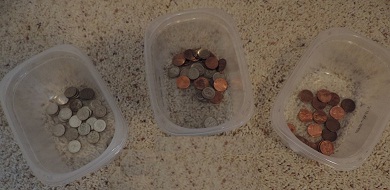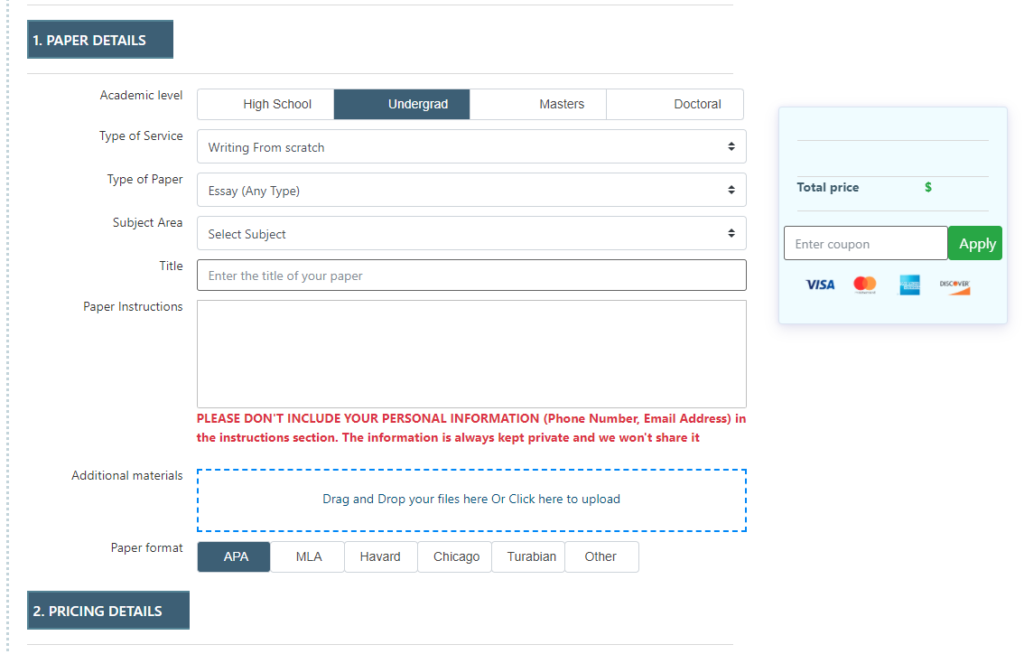EXPERIMENT ANSWER SHEET.
SUMMARY OF ACTIVITIES FOR WEEK 7 EXPERIMENT ASSIGNMENT
• Experiment Exercise 1 – Evolutionary Change without Natural Selection
• Experiment Exercise 2 – Evolutionary Change with Natural Selection
• Experiment Exercise 3 – Evolution and Genetic Drift
Before starting, be sure you have read over the information in the Week 7 Experiment Introduction.
Materials Needed
For the first two exercises you will need the following:
• 50 red M&Ms and 50 green M&Ms or 50 each of two items that are distinguishable by color but are similar in size and texture (e.g., dimes and pennies, two different color beads).
• Four containers large enough to hold the above items.
Experiment Exercise 1: Evolutionary Change without Natural Selection
In this first exercise, we are going to look for evidence of evolutionary change in a population in the absence of natural selection by looking at the change in allele frequencies over time in a simulated population. We will start with a population of 50 individuals in which there are two alternate alleles (H and h) in equal proportions (each at a frequency of 0.5 or 50%). Individuals have the possible genotypes: HH, Hh or hh. These two alleles do not offer any selective advantage, so neither is selected for or against, meaning they are neutral. We will record the frequency of these alleles over 10 generations. Prior to advancing on to the next generation, six alleles (= three individuals) will be removed at random.
Before you begin, answer the following:
Question
1. What is your prediction as to what will happen to the frequencies (note that this is different than the number) of these two alleles over 10 generations? Word your prediction as an “if-then” statement based on the experiment design..
Procedure:
A. Let 50 M&M’s of one color (i.e. red) represent the dominant allele (H) and 50 M&M’s of another color (i.e. green) represent the recessive allele (h).
B. Let one container represent the Habitat where random mating occurs. Place all of the M&Ms (or other items) into this container. This is your starting gene pool of your “parent” population or Generation 0.
C. Label the other three containers HH for homozygous dominant individuals, Hh for heterozygous individuals and hh for the homozygous recessive individuals. Notice that individuals have two alleles.
D. Mix up your Habitat well and without looking, select two items (alleles) at a time; these two alleles represent a single individual. On a piece of paper, keep track of the genotypes of the individuals withdrawn. For instance, if you draw one red and one green M&M, that counts towards “Number of Hh individuals.” If you draw two red M&Ms, that counts towards “Number of HH individuals” and so on.
E. Continue drawing pairs and recording the results until all items (alleles) have been withdrawn and sorted. Be sure to place the “offspring” into the appropriate dish: HH, Hh, or hh. Note that the total number of individuals will be half the total number of items because each individual requires two alleles, so you will have 50 offspring (but 100 alleles). Record the number of HH, Hh and hh individuals drawn for Generation 1 in Table 1 below.
F. Next count (or calculate) the total number of H and the total number of h alleles for the first generation and record the number in Table 1 below in the columns labeled “Number of H Alleles” and “Number of h Alleles.”
G. AID up the total number of H alleles and h alleles for the first generation and record this number in the column labeled “Total Number of Alleles.” If you did everything correct, you should still have 50 H alleles and 50 h alleles. This has already been entered for you in the Table below for Generation 1.
H. Combine the HH, Hh and hh individuals back into the Habitat container and mix well. Randomly remove three pairs of alleles (= three individuals, six items) and set them aside.
I. Repeat steps D through H to obtain Generations 2 through 10. Remember to randomly remove three pairs of alleles each time. Because I know that each generation will have six fewer alleles, I have also entered the total number of alleles in the Table below. Be sure that is the number your alleles aID up to!
Here is a photograph of this process after six generations. The sixth generation has been distributed into the HH, Hh and hh containers. Note that dimes and pennies have been used.

J. After entering your number of individuals and allele counts for each generation, you now need to determine the allele frequency of H and h for each generation and record them the Table below. To determine allele frequency take:
o # of H /Total alleles in the generation = Allele frequency of H (express as a decimal)
o # of h /Total alleles in the generation = Allele frequency of h
Note that the total number of alleles will change each generation, but the frequency the H allele plus the frequency of the h allele should aID up to 1.0 for each generation.
Table 1. Results evolutionary change without natural selection.
|
Generation |
Number of HH individuals |
Number of Hh individuals |
Number of hh individuals |
Number of H alleles |
Number of h alleles |
Total Number of alleles |
Allele Frequency of H |
Allele Frequency of h |
|
1 |
|
|
|
50 |
50 |
100 |
0.5 |
0.5 |
|
2 |
|
|
|
|
|
94 |
|
|
|
3 |
|
|
|
|
|
88 |
|
|
|
4 |
|
|
|
|
|
82 |
|
|
|
5 |
|
|
|
|
|
76 |
|
|
|
6 |
|
|
|
|
|
70 |
|
|
|
7 |
|
|
|
|
|
64 |
|
|
|
8 |
|
|
|
|
|
58 |
|
|
|
9 |
|
|
|
|
|
52 |
|
|
|
10 |
|
|
|
|
|
46 |
|
|
K. Generate a line graph of Allele frequency vs Generation. This means you need to graph the last two columns of your data in the Table above. Paste your graph below. Be sure to label your axes.
Questions
2. Describe what your graph above depicts with respect to the frequency of the two different alleles across generations.
3. Was your prediction correct? Why or why not?
4. Define evolution. Are the results of this simulation an example of evolution? Explain your answer. Cite any sources used.
Experiment Exercise 2: Evolution Change with Natural Selection
In this second exercise, we will determine the effect that natural selection has on the frequency of two alleles which start off in equal proportions (50:50) in the population. This time, individuals who are hh die, meaning the homozygous recessive allele combination is lethal. These individuals will be removed from the gene pool when they are drawn and will not contribute to the following generation. This means that the h allele is being selected against. Keep in mind that carriers of this lethal allele (e.g., those individuals that are Hh) are unaffected because the h allele is recessive.
Question
1. What is your prediction as to what will happen to the frequencies of these two alleles over 10 generations? Word your prediction as an “if-then” statement based on the experimental design..
Procedure:
A. Return ALL alleles to the Habitat container and ensure that it contains 50 H alleles and 50 h alleles. This is our Generation 0.
B. Use the other three containers labeled HH for homozygous dominant individuals, Hh for heterozygous individuals and hh for the homozygous recessive individuals.
C. Mix up your Habitat container well and without looking, select two alleles at a time; these two represent a single individual. On a piece of paper, keep track of the type of individual withdrawn (HH, Hh or hh).
D. Continue drawing pairs and recording the results until all alleles have been withdrawn and sorted. Be sure to place the “offspring” into the appropriate dish: HH, Hh, or hh. Record the number of HH, Hh and hh individuals drawn for Generation 1 in Table 2 below.
E. Next count (or calculate) the total number of H and h alleles for the first generation and record the number in the Table below.
F. AID up the number of H alleles and h alleles for the first generation and record this number in the column labeled “Total Number of Alleles.” If you did everything correct, you should still have 50 H alleles and 50 h alleles. This has already been entered for you in the Table below for Generation 1. You will need to enter this information for Generations 2-10, as it will change.
G. Now it is time for natural selection. Remove all of the h alleles from the container labeled hh and discard them. These individuals have died and cannot reproduce.
H. Return the alleles of the remaining HH and Hh individuals back to the Habitat container.
I. Repeat steps D through H to obtain Generations 2 through 10. Remember that each time, all hh individuals die and are removed after you have counted them.
J. After entering your number of individuals and allele counts for each generation, you now need to determine the allele frequency of H and h for each generation and record them in Table 2 below.
Table 2. Results from evolutionary change with natural selection.
|
Generation |
Number of HH individuals |
Number of Hh individuals |
Number of hh individuals |
Number of H alleles |
Number of h alleles |
Total Number of alleles |
Allele Frequency of H |
Allele Frequency of h |
|
1 |
|
|
|
50 |
50 |
100 |
0.5 |
0.5 |
|
2 |
|
|
|
|
|
|
|
|
|
3 |
|
|
|
|
|
|
|
|
|
4 |
|
|
|
|
|
|
|
|
|
5 |
|
|
|
|
|
|
|
|
|
6 |
|
|
|
|
|
|
|
|
|
7 |
|
|
|
|
|
|
|
|
|
8 |
|
|
|
|
|
|
|
|
|
9 |
|
|
|
|
|
|
|
|
|
10 |
|
|
|
|
|
|
|
|
K. Generate a line graph of Allele frequency vs Generation #. This means you need to graph the last two columns of your data in the Table above. Paste your graph below. Be sure to label your axes.
Questions
2. Describe what your graph above depicts with respect to the frequency of the two different alleles across generations.
3. Was your prediction correct? Why or why not?
4. Explain why the h allele was not entirely eliminated from the population.
5. Based on your earlier definition of evolution, are the results of this simulation an example of evolution? Explain your answer.
Experiment Exercise 3: Mechanisms of Evolutionary Change
Be sure that you have completed the suggested readings; your success on this exercise is dependent on your understanding of evolutionary concepts!
Procedure
A. Open the following website:
BioMan Biology. No date. Biology Games and Virtual Labs: Evolution
http://biomanbio.com/GamesandLabs/EvoClassGames/aaevo.html
B. Click where it says Press Spacebar or Click Here to Continue! And click again to continue.
C. Read over the instructions carefully, paying particular attention to the controls. Notice that as you successfully shoot the correct answer, you will need to reload.
D. Click again where it says Press Spacebar or Click Here to Continue!
E. Click on Mechanisms and begin.
a. A statement will be shown at the bottom of the screen.
b. Use the arrow keys to move to the correct term and use the space to shoot it down. Remember to reload!
c. Keep playing until you are told “You have succeeded here earthling! But can you save the rest of your planet?” Start over if you fail.
F. Record your % correct and score in Table 3 below when you are done. Feel free to repeat to improve your score if you would like.
G. Reload the page to start over or click on the link above to return to the start page.
H. Click where it says Press Spacebar or Click Here to Continue! And click again to continue.
I. Review the instructions and click again where it says Press Spacebar or Click Here to Continue!
J. Click on Mechanisms 2 and begin.
a. As before, a statement will be shown at the bottom of the screen.
b. Use the arrow keys to move to the correct term and use the space to shoot it down. Remember to reload!
c. Keep playing until you are told “You have succeeded here earthling! But can you save the rest of your planet?” Start over if you fail.
K. Record your % correct and score in Table 3 below when you are done. Feel free to repeat to improve your score if you would like.
L. Answer the questions that follow.
|
|
% Correct |
Score |
|
Mechanisms |
100 |
1003 |
|
Mechanisms 2 |
100 |
1006 |
Questions
1. Match the following statements with the correct term
a. Mutation f. Bottleneck
b. Genetic drift g. Founder effect
c. Gene flow h. Immigration
d. Natural selection i. Emigration
e. Non-random mating j. Speciation
____ Type of genetic drift that occurs when a new colony is established, that by chance is genetically different than the original population.
____ Can result in evolution by acting on favorable traits.
____ Only male lions with large, thick manes are able to breed.
____ Reproductive isolation of two populations of penguins can result in this.
____ The loss or gain of alleles from a population by the movement of individuals into or out of the population.
____ Movement of individuals into a population, bringing with them new alleles.
____ Random events that cause changes in gene frequencies.
____ Type of genetic drift in which there is a drastic reduction in population size and a change in allele frequencies.
____ The ultimate source of new alleles and traits that natural selection can act on.
____ When individuals leave a population, taking alleles along with them.
1. Define microevolution. Explain how the bottleneck effect and the founder effect each affect microevolution. Be sure you demonstrate your understanding of these three concepts in your answer.
2. Because of prolonged drought, the trees on an island are producing nuts that are much smaller with thicker and harder shells. What will happen to the birds that depend on the nuts for food?
Of the three general outcomes of natural selection, this example illustrates ____________ selection.
3. What is meant by “survival of the fittest” and how does it relate to evolution? Are these two concepts the same or different? Justify your answer and be sure to define both concepts adequately.
4. Define and compare natural and artificial selection, including the source of selection pressure and the traits selected for. Provide a specific example of each.
5. What is speciation in general? Briefly describe the difference between allopatric speciation and sympatric speciation. Be sure to include under what sort of conditions each type might occur.
6. Huntington’s disease is a dominant disorder that causes progressive deterioration of brain cells and eventually death. Even though this is a fatal disease and a dominant one, it has persisted in the human population. Explain the reason that Huntington’s has not been eliminated. (You will have to look up information on the disease paying special attention to the age at which it is expressed. It is important to understand the significance of this.)
8. In _____________ selection, individuals with both extreme forms of a trait are at a selective advantage.
. The spotted touch-me-not, a flowering plant, has seed pods that burst open when touched and forcefully eject their seeds. Such an adaptation is favorable because it
A. aids in the dispersal of the species. B. attracts insects that aid in pollination. C. prevents germination within the seed pod. D. can cause genetic changes to occur.
9. Which concept was not included in Charles Darwin’s theory of natural selection?
A. survival of the fittest B. struggle for existence C. overproduction of offspring D. punctuated equilibrium.








